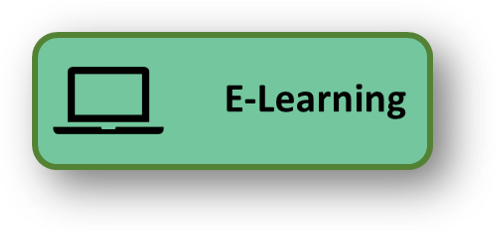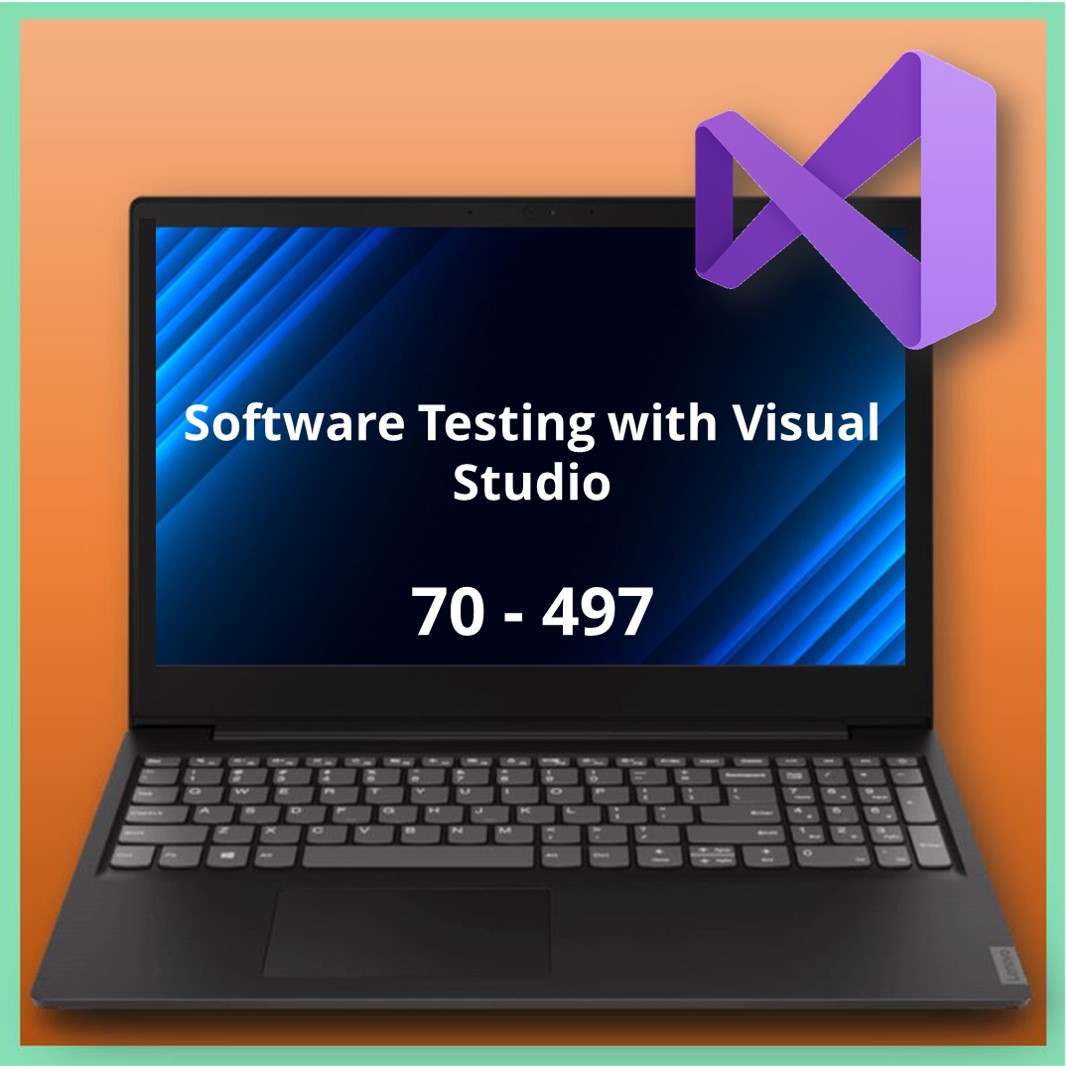Aangeboden leervormen

70-497: Software Testing with Visual Studio
Met de online training 70-497: Software Testing with Visual Studio van Sinteno krijg je de meest complete digitale leeromgeving en de beste voorbereiding op de praktijk. Het is een dynamische en unieke voorbereiding op de certificering EN geeft je tools die volledig zijn geïntegreerd in een omgeving.
De online training 70-497: Software Testing with Visual Studio geeft toegang tot zowel de e-Learning, de examensimulatie, een online mentor, examenquizzen, tips, trucs en links.
Deze online training geeft echter géén toegang tot een Live Lab.
Hier vind je meer informatie over CertKits en Live Lab's
In deze online training 70-497: Software Testing with Visual Studio leer je de functionaliteiten van Visual Studio in te zetten zodat je op een juiste manier software kunt gaat testen. Zo leer je hoe je zogenaamde testplannen, handmatige en automatische tests en technieken om de workflow van het testproces te beheren, kunt maken.
Onderwerpen die onder andere aan bod komen zijn Visual Studio 2012, klonen van testplannen, de test configuration manager, test suites, testing requirements, test steps, rapporten, omgaan met bugs, lab center, out-of-the-box reports, bulk updates in Excel en nog heel veel meer.
Voor wie
Tester, Softwareontwikkelaar.
Programma
Tijdens de online training 70-497: Software Testing with Visual Studio worden de volgende onderwerpen behandeld:
Create and Configure Test Plans
- Start the course
- Define general concepts of software testing with Visual Studio 2012
- Create a new test plan in the Testing Center
- Select test settings and configurations
- Create a new standard environment using the Test Controller Configuration Tool and verify it
- Select and compare an available build and assign it to the plan
- Create a clone of your test plan
- Create a new test setting and select the set of roles that you want to use
- Configure and define data and diagnostics options of each role
- Recognize how to select different test settings based on your run
- Specify why you need different configurations
- Manage your configurations in the Test Configuration Manager
- Create a new configuration variable and assign allowed values to that variable
- Recognize how:
- And when to set the configuration state as active or inactive
- To add default configurations for new test cases
- To delete test configurations and change the state of a test configuration to inactive
- Describe the different types of test suites and test suite operations
- Create a:
- Query-based test suiteR
- Requirement-based test suite
- Static test suite
- Perform a copy of a test suite
- Create a query-based test suite using hierarchical queries
- Configure a clone of a test suite from the command line
- Manage your test suites through a web browser
- Recognize the assigned to field for test cases
- Select multiple test configurations for a particular test case
- Apply a specific order to list and run your test cases
- Understand the basic concepts of creating, configuring, and managing test plans and suites
Manage Test Cases
- Start the course
- Design test cases that have clear and measurable steps
- Select a test case title, area, iteration, state, priority, assign to, and automation status
- Apply:
- Attachments and links to your test case
- A description and the history to your test case
- Testing requirements
- Recognize how a test case workflow works with associated automation
- Use a grid view to bulk author test cases
- Add and remove parameters and data to and from actions or expected results
- Apply highlighted repeatable test actions using fast forward for manual testing
- Apply clear, effective expected results of a test step action
- Attach a document or screenshot to a test step
- Recognize the:
- Need to parameterize in order to manage test case iterations
- Actions involved in inserting a parameter variable
- Actions involved in renaming parameters values
- Identify the characteristics and need of shared steps
- Recognize the actions involved to create shared steps
- Design shared steps that can be reused effectively across different test cases
- Recognize the actions involved in creating action recording for your shared steps
- Define the steps involved in:
- Reviewing requirement
- Verifying requirements
- Verifying all accounted requirements
- Understand the creation, configuration and management requirements of test cases
Manage Test Execution Part 1
- Start the course
- Describe the importance and idea behind fast forwarding test cases
- Perform the steps to run a test with options
- Indicate and set the state of your test run as Pass, Fail, Pause, Blocked, or Not applicable
- Add comments and snapshots when validating expected results
- Perform the steps to run test from your browser
- Perform the steps to update the status of multiple test cases without opening them in the test runner
- Customize, pause, and resume test results fields in Microsoft Test Manager (MTM)/web browser
- Recognize actions involved of inline editing of tests during test execution
- Manually test Windows Store apps and review action logs
- Perform:
- Exploratory testing in MTM in order to provide quick feedback
- Requirement-based exploratory testing of a work item
- The process of generating a test case from test
- The process of generating bugs in exploratory testing
- Recognize the steps involved to add a screen shot while performing exploratory testing
- Recognize the steps involved to add videos and audio recording during exploratory testing
- Track bug metrics, trends, and status
- Verify bugs by creating tests from bugs
- Analyze bug reports
- Manage bug flow
- Understand test execution through test runs, exploratory testing, and bug management
Manage Test Execution Part 2
- Start the course
- Create new environments in Lab Center
- Create copies of environments in Lab Center
- Run tests on remote environments in Lab Center
- Execute test cases in a lab environment
- Perform the steps to select the build in use
- Compare the current build to a previous build
- Perform the steps to view your recommended tests
- Perform the steps to analyze your work items
- Analyze reports
- View your test plan results in MTM
- Analyze test suites
- Perform an analysis that identifies areas with low quality
- Identify the status of your test plan
- Work with out-of-the-box reports
- Customize out-of-the-box reports
- Validate work item requirements
- Manage work item relationships
- Perform the steps to create work item queries
- Perform bulk updates in Microsoft Excel
- Understand test execution through lab center environments
Resultaat
Na het volgen van de online training 70-497: Software Testing with Visual Studio ben je in staat om software te testen door gebruik te maken van Visual Studio.
Voorkennis
Je hebt ongeveer 1 jaar ervaring met het testen van software.
Examen
Let op: Deze training blijft wel bestaan maar de mogelijkheid om het bijbehorende examen af te leggen is per 31 januari 2021 komen te vervallen.
Een groot aantal Microsoft trajecten zijn namelijk aan het veranderen. Veel MCSA en MCSE trajecten maken plaats voor Role-Based trajecten.
De vervanger van deze online training is nog niet bekend.
Bij de training inbegrepen
| Certificaat van deelname | ja |
| Voortgangsbewaking | ja |
| Geschikt voor mobiel | ja |
| Studieadvies | Onze consultants zijn beschikbaar om je te voorzien van studieadvies. |
| Studiemateriaal | Gecertificeerde docenten met uitgebreide kennis over de onderwerpen. |
| Service | Service via telefoon of e-mail. |







